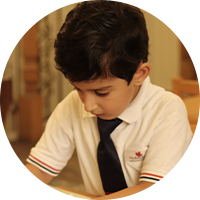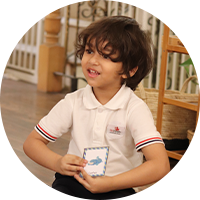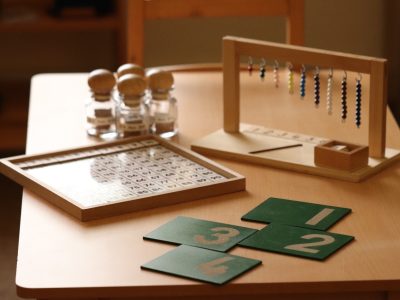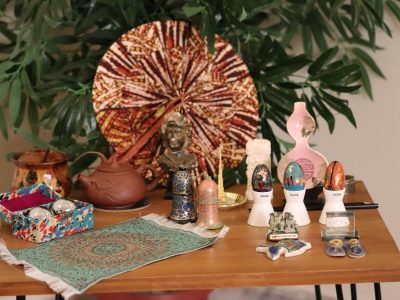The Montessori Curriculum offers children five key areas of study: Practical Life, Sensorial, Mathematics, Language, and Culture. Each learning area is made up of a set of Montessori materials that teach one key knowledge area or skill
Practical Life
The purpose of the Practical Life area is to provide real life experiences for children, through which they develop motor control and coordination, independence, concentration and a sense of responsibility. Practical life area teaches more than textbooks. Textbooks can teach how to do things but doing practically makes it different. We believe experiential learning is a better way to learn and grow.

This area is divided in 4 main areas:

Fine motor skills
which strengthens the child’s hand muscles to prepare them for the action of holding a pencil to write.

Care of self
Dressing frames to introduce skills as buttoning, zipping, tying, organizing etc and Hand washing, doll washing, pouring juice.

Environment Care
Setting up the table, clearing it after you are done , sweeping, watering plants and tidying up your surroundings

Grace and courtesy
Being courteous is very important aspect of daily life, we focus on courteous greetings, not interrupting and table manners.

Sensorial
The purpose of the Sensorial activities is to help the child to sort out in an orderly manner impressions received every day. The specifically designed materials used in this area help the child to develop discrimination and to broaden and refine all senses. It is one of the most important areas as it allows the child to lose his/her self in a specific task, by manipulating the materials with her own hand, by consequence helping the child to develop the mental stamina and skill involved in concentrating over time.
Language and Literacy
From a very young age, language is encouraged by simply allowing children to talk to each other and to the adults. Teachers always use the correct words for everything in the classroom, therefore increasing the child’s vocabulary. The broader the child’s vocabulary, the easier reading comprehension will be. Dr. Montessori introduced the concept of kinesthetic memory, i.e. memories that brand themselves deep inside the mind. Therefore, activities such as tracing sand paper letters will help the child to absorb their shapes much easier than simply looking at them and trying to copy them. At RMM this method is further enhanced through language games, songs, and discussions.


Mathematics
Maths is not liked by many people and is probably the most despised school subject. When adults are first shown the Montessori math curriculum, the reaction is always the same − they always wish it had been their base for understanding Mathematics. Learning math begins with concrete examples, Children begin to associate numeral and quantity with number rods and number cards. Pupils master the basics of arithmetic using concrete materials and acquire a grounded understanding of the meaning of arithmetic operations
Culture
This area of study provides children with exposure to inspiring world of diversity, wonders of the world, its people, history, culture, music & arts.
- Geography: Your child is exposed to countries, their customs, foods and habitats. They’re taught about solar system, land forms.
- History: Talking about birth and daily life, they make timelines with pictures.
- Science: Early learners need to move & touch to truly learn ANYTHING.

Curriculum can be discussed in detail with our Academic Advising Coordinator.

